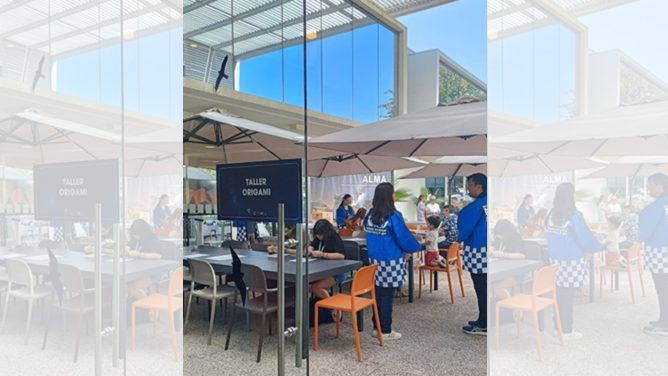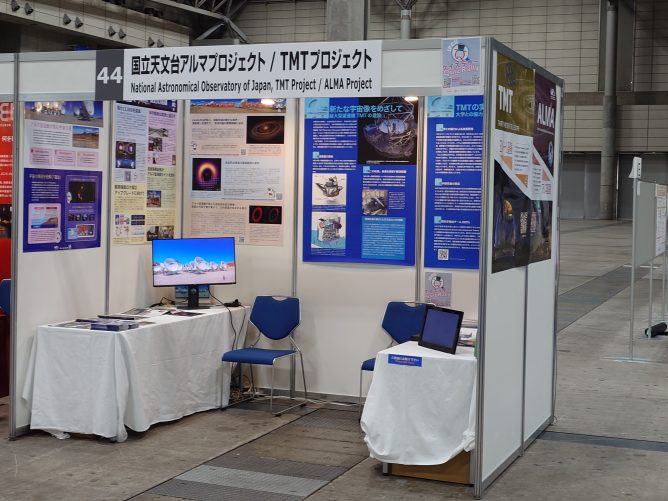The National Astronomical Observatory of Japan (NAOJ) and the National Institute of Information and Communications Technology (NICT) signed a comprehensive collaboration agreement in the signing ceremony held on December 3, 2019.

Dr. Hideyuki Tokuda, the President of NICT (right) and Dr. Saku Tsuneta, the Director General of NAOJ
Credit: NAOJ
NAOJ and NICT have been collaborating over the past ten years especially in the development of observing instruments for radio telescopes. Their developed instruments are integrated into ALMA and contribute to producing various research results.
One of the instruments jointly developed by NAOJ and NICT is the ALMA Band 10 receiver. The highest frequency band in ALMA, Band 10 is designed to cover an extremely high frequency range between 787 and 950 GHz (approximately 0.35 mm in wavelength); a frequency spectrum also called “terahertz-waves”. Due to its extremely high frequency, it was difficult to achieve a satisfactory level of performance in Band 10 initially when using niobium (Nb) for its superconducting material as adopted by other conventional radio telescopes, since the superconductivity state of niobium collapses in Band 10. At such a deadlock, NAOJ and NICT researchers found a promising alternative, niobium-titanium-nitride (NbTiN) with a higher operating frequency and successfully established a fabrication technology of the high quality NbTiN film that led to the realization of the world’s highest performance terahertz receiver [1] . The Band 10 receiver has been instrumental as part of the ALMA antenna, which allowed for the detection of various organic molecules such as glycolaldehyde in a massive star forming region [2] and will bring us further discoveries unveiling a new picture of the Universe that has never been seen by other telescopes.
NAOJ and NICT have also been collaborating in the area of the photonic technology combining radio waves and optical light. In an interferometer like ALMA where multiple antennas are employed for an observation, the signal timing at each antenna needs to be accurately aligned to produce a final combined data. To carry out this task, it is necessary to transmit a reference signal from an atomic clock to all the antennas located far from each other with a high level of stability. NAOJ and NICT, using their original light modulation technology, developed a device that can transmit high-frequency signals at an accuracy 1,000 times higher than conventional methods and with extremely high stability where fluctuations of one second or less could only happen within a timeframe of 300,000 years, achieving the world’s highest performance as a reference light source [3] . This signal generation technology has already been implemented in the equipment measuring the surface errors on the ALMA antenna and is expected to be utilized as a higher-quality reference signal generator for the ALMA 2 project that will have a larger antenna configuration area.
For the future, NAOJ and NICT will continuously work together toward the next-generation technology development, leveraging the strength of the two institutes. Along with these technical collaborative activities, NAOJ and NICT aim to build a constructive relationship between radio astronomy and information-communication services in a mutually harmonious and beneficial way, while seeking good solutions on radio frequency spectrum resources to be shared by the entire human race.
| 1 | Press Release as of June 16, 2009: World’s Highest Performance Submillimeter (terahertz) Receiver –Band 10, the highest frequency receiver in ALMA, was successfully developed– |
|---|---|
| 2 | Press Release as of November 22, 2018: ALMA’s Highest Frequency Receiver produces its First Scientific Result on Massive Star Formation |
| 3 | Press Release as of November 12, 2010: Development of the reference light source with the world highest quality –successful generation of optical signals with high stability, accuracy, and speed– |









